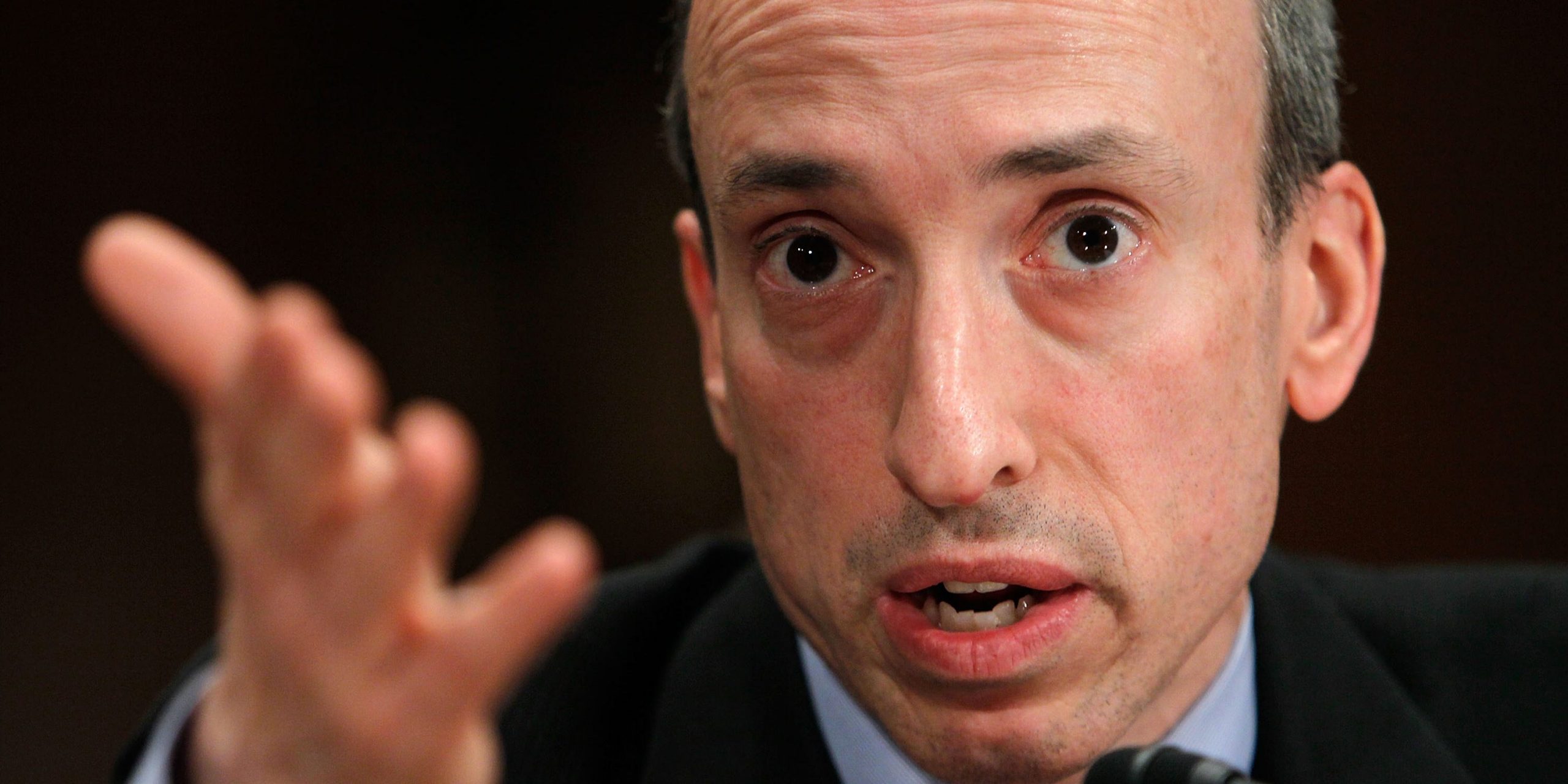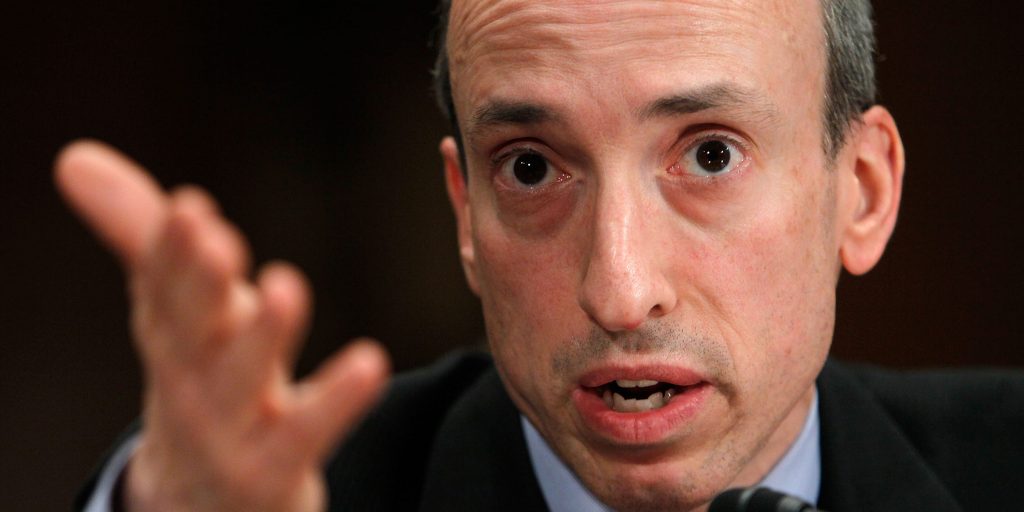
Alex Wong/Getty Images
- The SEC is looking at refining a rule that defends company executives from insider trading.
- Investors criticize the rule for not requiring public disclosure of a plan at the time it is set up.
- SEC Chair Gary Gensler said abusers of the current rule will be identified and punished.
- See more stories on Insider's business page.
The Securities and Exchange Commission is drafting a proposal that would tighten the legal protection company insiders are entitled to when it comes to defending themselves against possible insider trading.
SEC Chairman Gary Gensler told the Wall Street Journal's CFO Network Summit on Monday that there need to be changes to the rule. Regulators would ensure identification and punishment of any one that broke Rule 10b5-1 under the current legislation, he said.
Rule 10b5-1 allows insiders to buy or sell a specific number of shares at a predetermined time, without having access to any material non-public information. The law helps corporate employees avoid break insider trading rules.
Although these trades are made available via public filings, some market participants criticize the rule for not requiring public disclosure of an insider's plan at the time they set it up. The rule was established by the markets regulator in 2000 and has not been refined since then.
The proposal could introduce some limitations on company insiders, such as having to wait between four and six months after planning a trade, restricting cancellations or modifications, publicly disclosing adoptions and any changes, and capping the number of plans allowed, WSJ reported.
"Insiders can cancel a plan when they actually do have material nonpublic information," Gensler said. "This seems kind of upside-down to me. It also may undermine investor confidence."
He also said the SEC is devising new rules for special-purpose acquisition companies, a vehicle incorporated with the purpose of taking private companies public without going through the traditional IPO process. Gensler cast doubts about whether small investors fully understand the complex structure underlying SPACs and the wildly optimistic growth projections they make.
